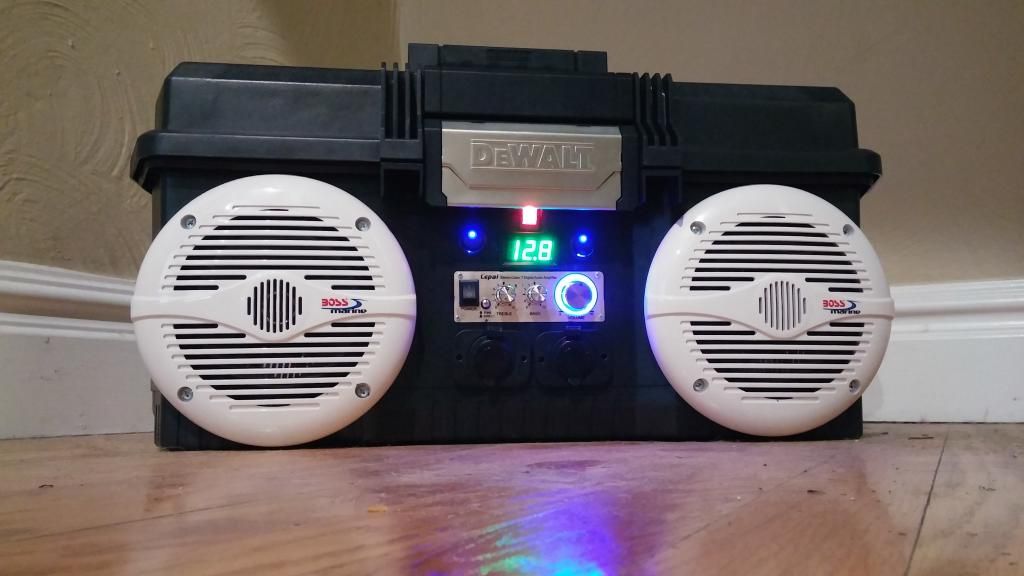105ah lifeline AGM in a DeWalt ds400 box with mppt charge controller inside, blue sea master, terminal fuse and 6 circuit, usb, 12v, voltmeter, power consumption (watts up clone), 1x 80mm case fan and 1x40mm fan on MPPT heatsink and 2k inverter fit in there.
Did something similar with speakers and 18ah battery. Has/HAD cig lighter ports, Lepai 2 channel mini amp, speakers, 120w inverter, voltmeter, and switches to turn on the voltmeter and the inverter. Music lasts all day and night even at rather loud volumes (little amp
could do more than you'd think)... better than bluetooth little 'jambox' things that are the craze lately. Then of course the ability to charge phones, jump cars, and blow up air mattresses.
This is version one (coworker convinced me to buy 6.5" speakers, doh)
Unfortunately, a week after I built this little thing, I charged it inside using a black and decker wall charger. Somehow even with the amp off, it fried. That lead me to go with a car CD deck, because they're more tolerant of voltage fluctuations, and I was able to get integrated bluetooth. Previous version above had a USB->Headphone jack bluetooth adapter which had a nasty ground loop interference.
Bring on version 2, DS400 box like you mentioned, same battery/speakers/inverter, nice bluetooth head unit with rear channels that you can configure to be a real subwoofer out (70w max I think - called Pioneer's
'Direct Sub Drive'), and an 8" sub! Thing booms, still lasts all day and night, and is super handy to have. All of it is marine grade/waterproof/watertight minus the head unit, but I might add a little head unit face cover that boats use later. Had this camping for 3 days in cloudy/rainy/awful weather, 100w panel leaning against a fence and never re-oriented to match what little sun there was kept this thing right around floating voltage the whole time. Leaving it on the entire night at a decent volume yielded 12.4 volts in the morning, topped off via solar by mid morning. I often snag the satellite radio out of my 4runner and have a separate dc adapter and antenna for it, then plug that in to the boom box, and don't have to worry about draining phone batteries to play music.
Oh yeah, there's a fuse panel inside with appropriate fuses for head unit, each cig adapter, and inverter. All of that wiring is 10 gauge, all connections had shrink tubing applied, and battery + to fuse panel and - to grounding block are 8 gauge
Version 2 in background on another camping trip, panel on roof rack of truck:
Testing version 2:
TL;DR the DS400 is a great choice for portable solar setup. It's extremely sturdy and the latches are great, top handle is sturdy, side handles are super sturdy. It
does have a weight limit of 110lb, so keep that in mind for batteries... which you'll also want to center or counter balance inside so it's easier to carry.













